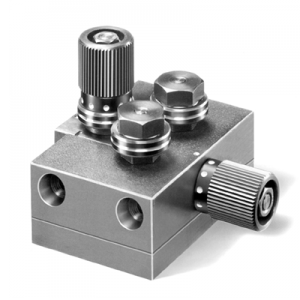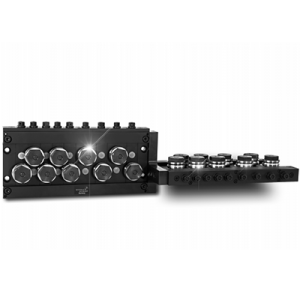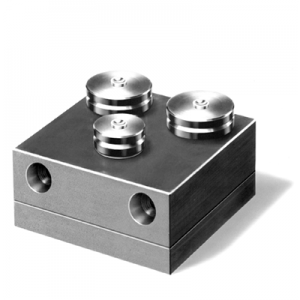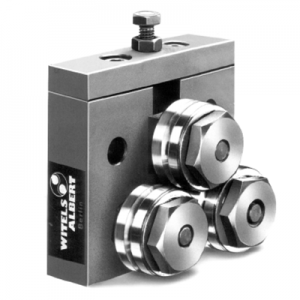Description
Fluctuating material parameters – particularly alternating residual stresses – and a variety of wound wire radii from the transport reel (or coil) means that a diversity of residual bends is produced when wire is straightened. A large initial bend range has a negative effect on the possible quality of straightening. Straightening in the Killing set® TRV produces a constant wire bend without the need for continuous checking and readjustment of the follow-up straightening device. The Killing set® TRV features a solid basic body accommodating three roller axles, two of which are supported in adjustable bearings. The two large rollers are infinitely rotatable around a common center point by means of an adjusting screw. The roller bearings are of cassette-type design, i.e. the straightening roller and its bearing are separate. This results in the following advantages:
- the groove does not weaken the outer ring of the bearing (as in the case with conventional straightening rollers),
- separation enables effective protection of the bearing from dirt,
- higher straightening speeds are possible by using smaller bearings.
- Greasing nipples are provided for lubricating the bearings.
The Killing set ® TRV has one small roller and two large rollers. The diameter of the small roller (at the exit end) is the same as that of the rollers on the follow-up straightening device. The Killing set ® TRV is arranged after the coil (reel) so that the wire first makes an “S” loop around the two large rollers before exiting via the small roller in the direction of the follow-up straightener. The wire’s angle of wrap around the large rollers is adjustable. The larger the wrap, the more intensely the bend of the straightening rollers is impressed on the wire. Another factor affected by the angle of wrap is the back pull in the wire. This back pull not only plays a major role in reducing the bend to a not insubstantial degree, it also results in stretching-bending-straightening for an additional positive effect. The wire’s material parameters are affected by alternate hardening processes. Severe alternate bends are induced with small bending radii, reducing the wire’s bend fluctuations and changing its state of residual stress. Bends are reduced in addition by the higher pull-off force. The wire leaves the device with a constant residual bend. Users are producers and processors of drawn wire, steel cord, welding wire and fine wire.The TR is built in the German tradition of high quality and is suited for material diameters from nearly 0mm to 3mm OD in four different sizes.





